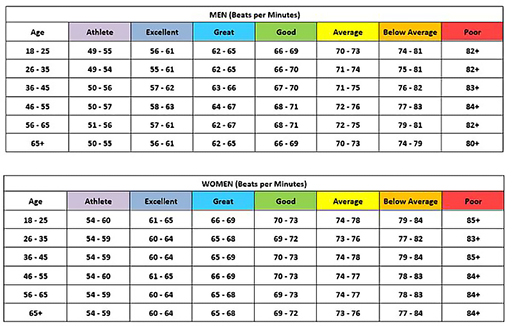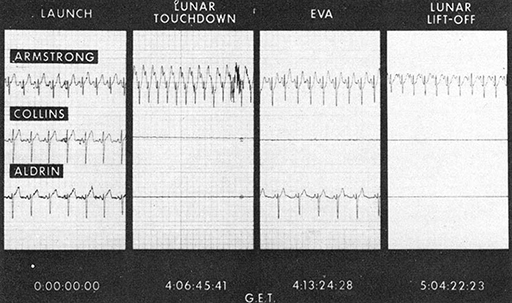6.1 Practical experiment 2
Practical experiment 2: Measuring your heart rate and respiration
For this experiment, you are going to take some measurements of your heart rate and respiration after three activities: sitting down, lying down and after some moderate exercise. You will only need a timer (on a smartphone for example), a chair and somewhere to lie down comfortably. It would be great if you could use an inclined bed like that used in Video 1.
If taking part in these activities is difficult for you, please watch the following videos and then use the alternative data provided in Table 4a and 4b below.
First, watch Video 3 which introduces this experiment and demonstrates the first activity..
Transcript: Video 3 Introduction to Practical experiment 2
Remember that you will need to find your pulse to measure your heart rate. If you place two fingers (not your thumb!) on the pulse point in your neck, you should feel your pulse.
Measuring your respiration is just counting the number of breaths you take in (inhale). It is easier if you find someone else who can count this while you are counting your heart rate.
Now complete Activity 5.
Activity _unit3.7.1 Activity 5 Counting heart rate and respiration when lying down
Use the tables below to record your results when lying down.
| Heart rate | Reading 1 | Reading 2 | Reading 3 | Average |
| lying down |
| Respiration | Reading 1 | Reading 2 | Reading 3 | Average |
| lying down |
Now watch Video 4 which shows how to measure your heart rate in a sitting position. Then complete Activity 6.
Transcript: Video 4 Measuring your heart rate and respiration when sitting
Activity _unit3.7.2 Activity 6 Counting heart rate and respiration when sitting
Give yourself a few moments to relax and then count the number of times your heart beats in one minute (60 seconds). You will also need to record the number of breaths you take in 60 seconds (respiration).
| Heart rate | Reading 1 | Reading 2 | Reading 3 | Average |
| sitting |
| Respiration | Reading 1 | Reading 2 | Reading 3 | Average |
| sitting |
Now watch Video 5 which shows how to measure your heart rate after doing some moderate exercise, for example jogging on the spot, or walking up and down stairs. Then complete Activity 7.
Transcript: Video 5 Measuring your heart rate and respiration after moderate exercise
Activity _unit3.7.3 Activity 7 Counting heart rate and respiration after moderate exercise
Measure your heart rate and the number of breaths you take in 60 seconds whilst doing some form of moderate exercise.
| Heart rate | Reading 1 | Reading 2 | Reading 3 | Average |
| moderate exercise |
| Respiration | Reading 1 | Reading 2 | Reading 3 | Average |
| moderate exercise |
Now watch Video 6, which discusses recording your results and calculating the averages.
Transcript: Video 6 Recording your results and calculating averages.
Now calculate your averages by using Equation 1. Please note that you should round your final average answer to 2 significant figures.
What were your results? Don’t worry if you weren’t able to complete the activities. The results for Tom’s activities are provided in Table 4a and 4b.
| Heart rate | ||||
|---|---|---|---|---|
| Activity | Reading 1 | Reading 2 | Reading 3 | Average |
| lying down | 56 | 53 | 55 | 55 |
| sitting | 66 | 67 | 64 | 66 |
| moderate exercise | 97 | 95 | 102 | 98 |
| Respiration | ||||
|---|---|---|---|---|
| Activity | Reading 1 | Reading 2 | Reading 3 | Average |
| lying down | 11 | 13 | 10 | 11 |
| sitting | 30 | 29 | 32 | 30 |
| moderate exercise | 34 | 32 | 35 | 34 |
You can now compare your results with Figure 9. The two charts are for men and women, divided into age ranges. You won’t be surprised to know that, to be an astronaut, you would probably have to meet the ‘athlete’ criteria! Resting heart rate is in the sitting position.
When you experience stress or take exercise, your heart rate increases. Look at Figure 10 which shows the heartbeat of astronaut Neil Armstrong (1930–2012) as he landed Apollo 11 on the surface of the Moon in 1969.
Neil Armstrong and ‘Buzz’ Aldrin were in the lunar module while Mike Collins was in orbit around the Moon. You can see that Armstrong’s heart rate increased substantially at the ‘lunar touchdown’. There might have been issues with measuring the heart rates of Collins and Aldrin at key points, judging by the ‘flat line’ traces, but they were clearly still alive! Armstrong’s heart rate then reduced during the ‘extra-vehicle activity’ (EVA) when he walked on the Moon’s surface. Finally, his heart rate reduced more on lunar lift-off.
Now you will look at the heart rates of human beings compared with other animals.


